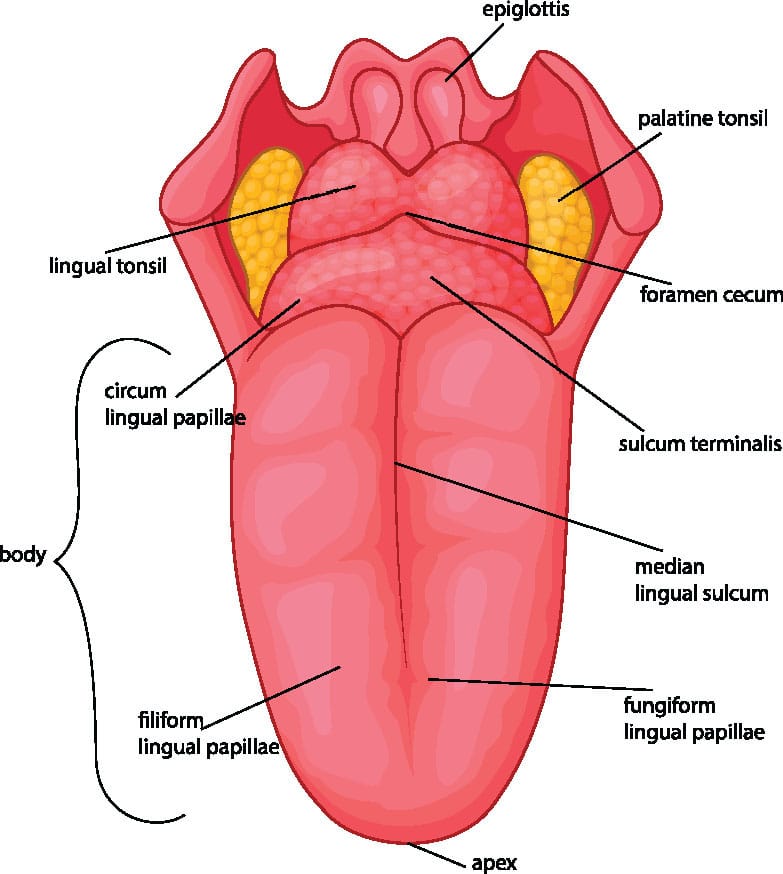
A Taste for Health
Talk about workouts! The human tongue stays busy with speaking, tasting and swallowing, not to mention any extra tongue tricks we make it do out of nervous habit (curling, thrusting, etc.). What do you know—or think you know—about this muscular organ?
Do you remember in biology class when your teacher told you the ability to curl your tongue was genetic? That’s not entirely true, although scientists give a nod to genetic influence. This fallacy was debunked in 1952, and yet the legend persists (Woods 2015).
Another myth is that the tongue is the strongest muscle in the body; that honor goes to the jaw muscle, while most powerful goes to the quads and glutes, and hardest-working to the heart. The tongue is special in its own right, though. It is all muscle—actually made up of eight different muscles that intertwine to create a “flexible matrix, much like an elephant’s trunk . . . called a muscular hydrostat” (Calderone & Fogelson 2014).
Did you know the tongue can get fat? There’s a correlation between tongue fat volume and obesity. And in fact, a study revealed that having a fatter tongue may be a risk factor for obstructive sleep apnea (Kim et al. 2014).
Here are some additional facts about the tongue:
- The average tongue length is 8.5 centimeters (3.3 inches) for men and 7.9 cm (3.1 inches) for women, measured from the epiglottis to the tip (Hopkin 1967).
- The tongue is as unique as a fingerprint and can act as an identity verification tool (Daller 2016).
- In Chinese medicine, the tongue is a “convenient diagnostic tool” and “can reveal signs of disease and imbalance” (Milner 2016).
- The average adult has between 2,000 and 4,000 taste buds (Daller 2016).
- A 2015 study found an association between physical fitness among older adults and oral function, “including tongue and lip movements” (Izuno et al. 2015).
